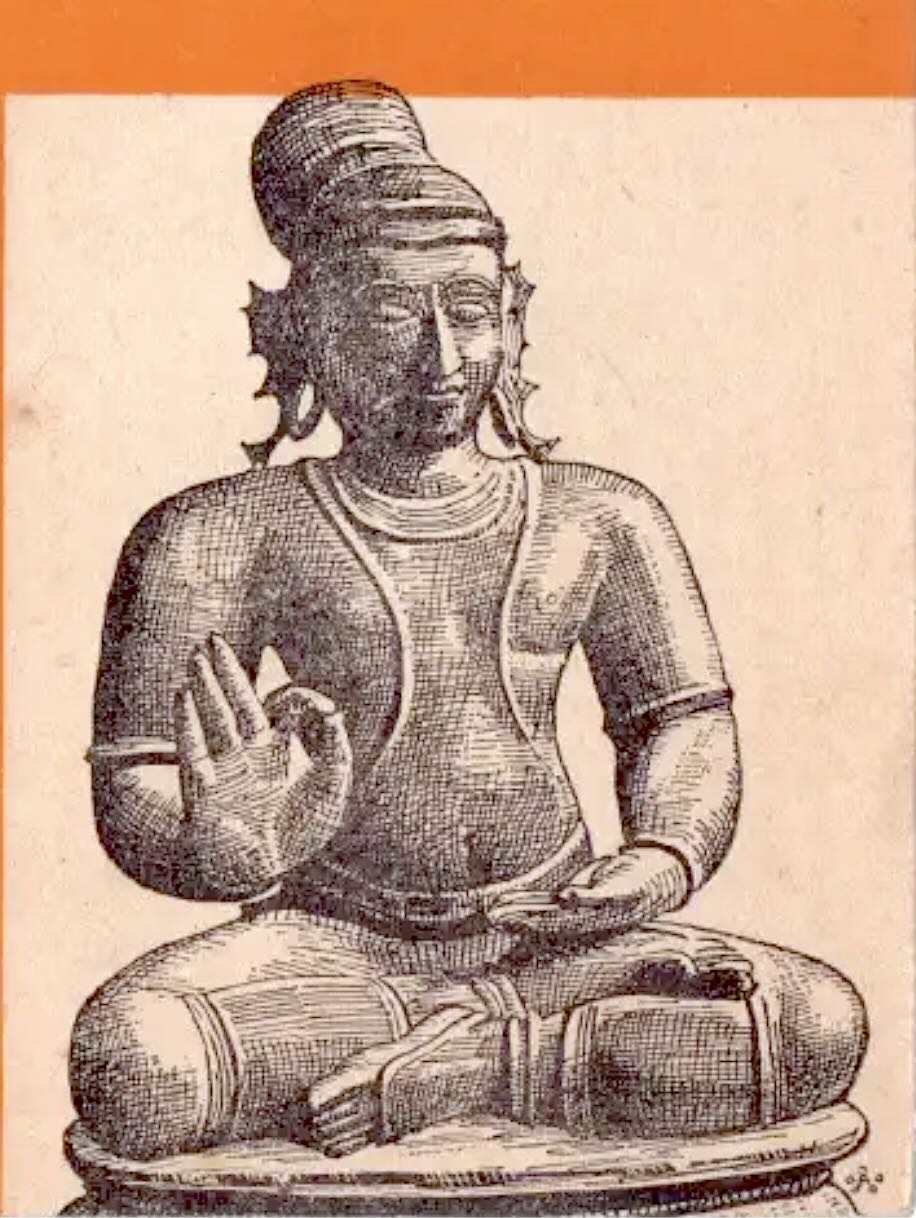Index
Nammalvar, by A. Srinivasa Raghavan
- Prefatory Note
- The ÄḻvÄrs
- NammÄḻvÄr's Life
- Nammalvar's Works
- Journey to the Real
- Nammalvar's Philosophy
- Nammalvar's Poetry
Nammalvar holds a high place among the poet-saints of Tamil Nadu. 'Come, poets' cries this saint-poet, 'if you want to live, labour with your hands and earn your bread with the sweat of your brow. Why sing a rich man's praises? And who is really rich on this earth? I see no one. Sing of your gods.'

(Makers of Indian Literature, Sahitya Akademi, New Delhi)
October 1, 1974
In this well-written monograph, the late Prof. A. Srinivasa Raghavan introduces to the readers the Alvars in general and Nammalvar in particular; explains the four works of Nammalvar in detail; comments on Nammalvar's 'inner life', his Journey to the Real, as revealed in his poetic outpourings; summarises Nammalvar's philosophy and poetry.
The author has brought to his task a lifetime's reverent intimacy with the poetry and personality of Nammalvar; and within the limits of this monograph, has done abundant justice to the achievement of Nammalvar as Bhakta, god-intoxicated singer and inspired poet. The numerous illustrative quotations read well in English, considering the fact that Tamil mystic poetry like Nammalvar's defies translation.
- Cover layout: Satyajit Ray
- Portrait: Line drawing by ANAND from photograph supplied by the Director of Archaeology, Govt. of Tamil Nadu, Madras.
